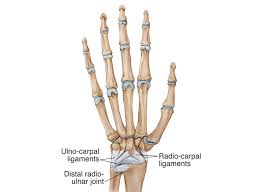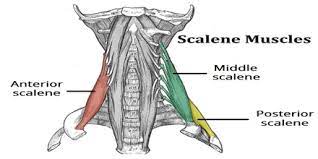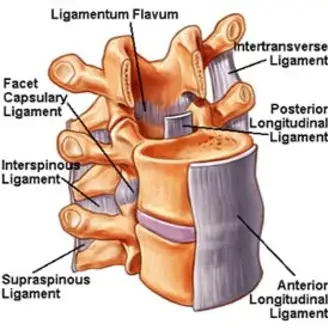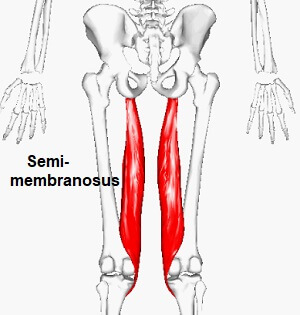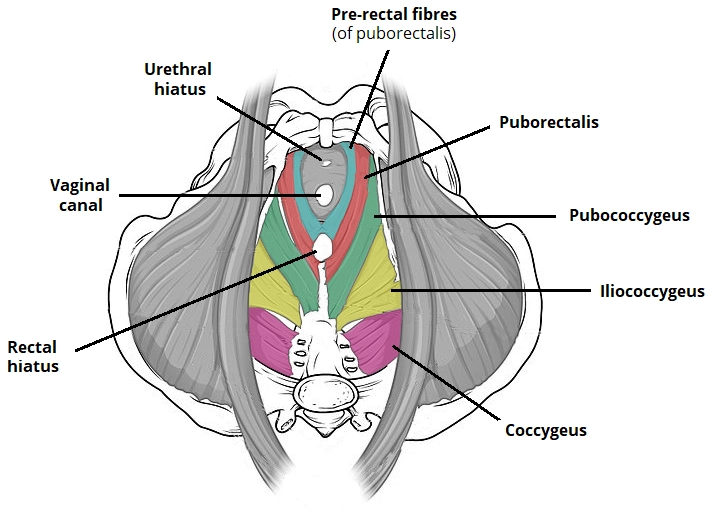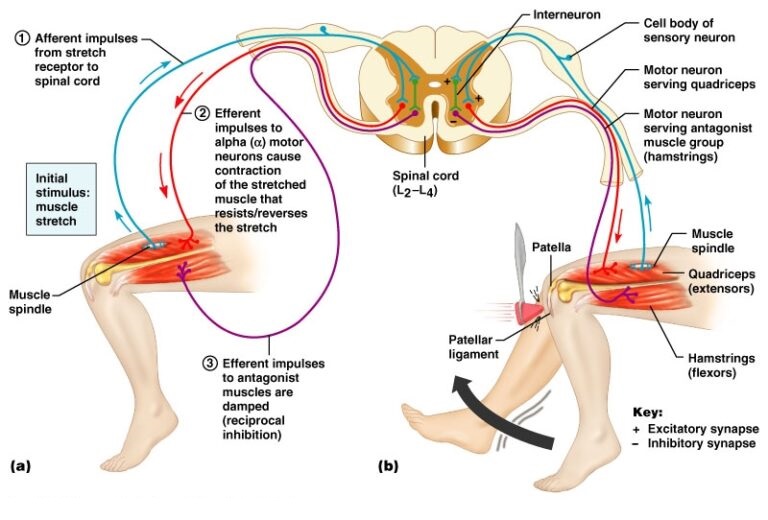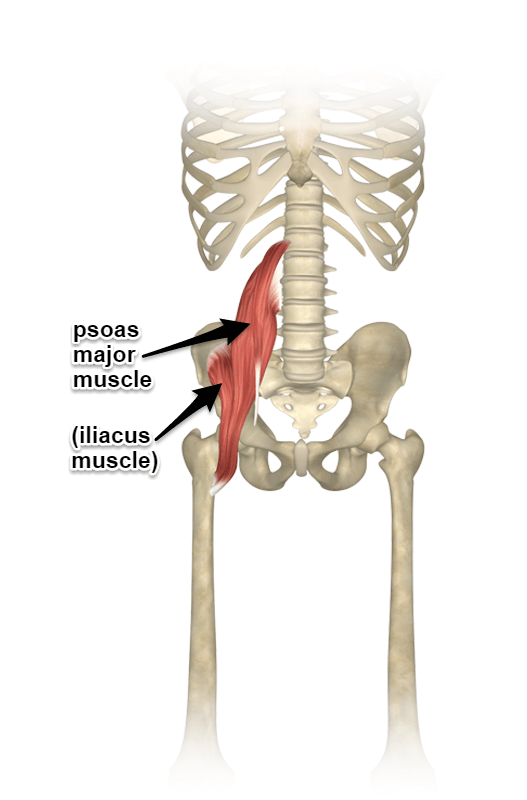Ulnar Collateral Ligament
Table of Contents
Introduction
The ulnar collateral ligament (UCL) is a strong band of tissue that connects the ulna bone in the forearm to the humerus bone in the upper arm. This ligament is located on the inner side of the elbow joint and plays an important role in stabilizing the joint during activities that involve throwing, such as in baseball or other overhead sports.
The ulnar collateral ligament can be subject to injury or damage, particularly in athletes who participate in throwing sports, and may require surgical repair or reconstruction. Understanding the anatomy and function of the ulnar collateral ligament is important for athletes, coaches, trainers, and medical professionals involved in the care of individuals who engage in these types of activities.
Structure of the Ulnar Collateral Ligament
The ulnar collateral ligament (UCL) is a complex structure that is comprised of three distinct bands, each with its own function and attachment points.
The anterior bundle is the most important and largest of the three bands, and it runs from the medial epicondyle of the humerus (a bony prominence on the inner side of the upper arm bone) to the sublime tubercle of the ulna (a small bony projection on the inner side of the forearm bone). This bundle is responsible for preventing excessive valgus (outward) stress on the elbow joint during overhead throwing motions.
The posterior bundle is located behind the anterior bundle and runs from the medial epicondyle of the humerus to the olecranon process of the ulna (the bony prominence at the tip of the elbow). This bundle provides additional stability to the elbow joint during overhead throwing motions.
The oblique bundle is the smallest of the three bands and is located between the anterior and posterior bundles. It runs from the medial epicondyle of the humerus to the ulna just below the sublime tubercle. This bundle helps to stabilize the elbow joint during both valgus and varus (inward) stress.
So in general, the ulnar collateral ligament is a thick, strong band of tissue that provides crucial stability to the elbow joint during overhead throwing motions. Injuries to this ligament can be serious and may require surgical intervention to repair or reconstruct.
Functions of the Ulnar Collateral Ligament
The radial collateral ligament (RCL) is a thick band of tissue that is attached from the lateral epicondyle of the humerus (a bony prominence on the outer side of the upper arm bone) to the annular ligament (a ring-shaped structure that surrounds the head of the radius, one of the two bones in the forearm). The radial collateral ligament provides stability to the elbow joint during movements that involve varus (inward) stress.
The primary function of the radial collateral ligament is to prevent excessive varus stress on the elbow joint. This type of stress occurs when the forearm is forced inward towards the body, which can happen during certain throwing motions or when the elbow is struck on the outer side. The radial collateral ligament helps to keep the radial head in place and prevents it from sliding out of the joint, which could cause pain, instability, and long-term damage.
In addition to its primary function, the radial collateral ligament also plays a role in stabilizing the elbow joint during other movements, such as gripping and lifting objects. It works in conjunction with other ligaments and muscles in the elbow to provide overall stability and support.
Blood supply of the Ulnar Collateral Ligament
The ulnar collateral ligament is supplied by several arteries and branches that originate from the brachial artery, ulnar artery, and interosseous recurrent artery.
The anterior band of the ulnar collateral ligament is supplied by the anterior ulnar recurrent artery, which arises from the ulnar artery. This artery runs anteriorly along the medial aspect of the elbow and provides blood supply to the anterior portion of the ulnar collateral ligament.
The posterior band of the ulnar collateral ligament is supplied by the posterior ulnar recurrent artery, which also arises from the ulnar artery. This artery runs posteriorly along the medial aspect of the elbow and provides blood supply to the posterior portion of the ulnar collateral ligament.
The transverse band of the ulnar collateral ligament is supplied by the interosseous recurrent artery, which arises from the common interosseous artery. This artery runs obliquely across the elbow joint and provides blood supply to the transverse portion of the ulnar collateral ligament.
In addition to these arteries, there are several anastomoses (connections) between these vessels that provide collateral circulation to the ulnar collateral ligament. These anastomoses ensure that even if one vessel is occluded, blood can still flow to the ulnar collateral ligament through alternative routes.
So in general we can say that the blood supply to the ulnar collateral ligament is critical for maintaining its integrity and preventing injury. Inadequate blood supply can lead to degeneration and weakening of the ligament, increasing the risk of injury during throwing activities.
Injuries of the Ulnar Collateral Ligament
Ulnar collateral ligament (UCL) injuries are commonly seen in athletes who participate in throwing sports, such as baseball, softball, and javelin throwing. The repetitive and forceful motions involved in these activities can put significant stress on the elbow joint, leading to ulnar collateral ligament injuries. Here are some of the activities that can cause ulnar collateral ligament injuries:
- Throwing: Throwing a ball repeatedly and with high velocity can put excessive stress on the ulnar collateral ligament, leading to small tears or complete ruptures. Pitchers in baseball and softball are particularly susceptible to ulnar collateral ligament injuries due to the high number of throws they make during a game.
- Improper technique: Poor throwing mechanics, such as using too much arm and not enough body, can also contribute to ulnar collateral ligament injuries. When proper technique is not used, the elbow joint is forced to absorb more stress, increasing the risk of injury.
- Overuse: Overuse of the elbow joint without proper rest and recovery can also lead to ulnar collateral ligament injuries. Athletes who engage in throwing activities frequently without allowing adequate time for rest and recovery are at a higher risk of developing ulnar collateral ligament injuries.
- Sudden trauma: A sudden impact or trauma to the elbow joint can also cause ulnar collateral ligament injuries. For example, if a baseball hits the elbow joint directly, it can cause significant damage to the ulnar collateral ligament.
- Inadequate warm-up: Failing to warm up properly before engaging in throwing activities can also increase the risk of ulnar collateral ligament injuries. A proper warm-up routine helps to prepare the muscles and joints for the stress of throwing, reducing the risk of injury.
In the end, we can say, ulnar collateral ligament injuries are commonly seen in athletes who participate in throwing sports due to the repetitive and forceful motions involved. Proper technique, rest and recovery, and warm-up routines can help in reducing the risk of ulnar collateral ligament injuries.
Symptoms of the Ulnar Collateral Ligament Injury
Symptoms of ulnar collateral ligament injuries can vary depending on the severity of the injury. Here are some common symptoms:
- Elbow Pain: The most common symptom of an ulnar collateral ligament injury is pain in the elbow joint. The pain may be felt on the inside of the elbow and may worsen with throwing or other activities that stress the ulnar collateral ligament.
- Swelling: ulnar collateral ligament injuries can cause swelling in the elbow joint, which may be accompanied by stiffness and limited range of motion.
- Weakness: A ulnar collateral ligament injury can cause weakness in the affected arm, making it difficult to perform certain activities that require strength, such as throwing a ball.
- Numbness or tingling: In some cases, an ulnar collateral ligament injury can cause numbness or tingling in the fingers or hand.
- Instability: Severe ulnar collateral ligament injuries can cause instability in the elbow joint, making it feel loose or wobbly.
It is very necessary to note that not all ulnar collateral ligament injuries cause immediate symptoms. Some athletes may continue to play through an ulnar collateral ligament injury without realizing they have one, which can lead to further damage and complications. If you feel any of these symptoms or suspect you may have an ulnar collateral ligament injury, it is very crucial to take medical attention as soon as possible.
Diagnosis of the Ulnar Collateral Ligament Injury
The diagnosis of an ulnar collateral ligament injury typically involves a combination of physical examination, imaging tests, and a review of the patient’s medical history and symptoms. Here are the steps involved in diagnosing an ulnar collateral ligament injury:
- Physical examination: The doctor will begin by examining the elbow joint, looking for signs of swelling, tenderness, and instability. They may also perform various tests to assess the strength and range of motion of the affected arm.
- Imaging tests: To confirm the diagnosis and determine the severity of the injury, the doctor may order imaging tests such as X-rays, MRIs, or ultrasounds. These tests can help identify any bone fractures, ligament tears, or other damage to the elbow joint.
- Medical history and symptoms: The doctor will also ask the patient about their medical history, including any past injuries or conditions that may have contributed to the ulnar collateral ligament injury. They will also ask about the onset and duration of symptoms, as well as any activities that may have caused or worsened the pain.
Based on the results of these tests and examinations, the doctor can make a diagnosis and recommend an appropriate course of treatment. In some cases, surgery may be necessary to repair or reconstruct the damaged ulnar collateral ligament. In others, conservative treatments such as rest, physical therapy, and anti-inflammatory medications may be sufficient to manage symptoms and promote healing.
Treatment of the Ulnar Collateral Ligament Injury
Examination test
The Valgus stress test
The valgus stress test is a physical examination maneuver used to assess the stability of the ulnar collateral ligament (UCL) in the elbow joint. The ulnar collateral ligament is an important ligament that helps to stabilize the elbow joint during throwing or other activities that involve repetitive arm motions.
To perform the valgus stress test, the patient is positioned with their elbow bent at a 20-30 degree angle and their forearm rotated outward. The examiner then places one hand on the outside of the elbow joint, just above the wrist, and the other hand on the patient’s hand or wrist.
The examiner then applies a medial force to the elbow joint, pushing it outward away from the body. This force places stress on the ulnar collateral ligament, which runs along the inside of the elbow joint and helps to prevent excessive outward movement of the joint.
If the ulnar collateral ligament is intact and functioning properly, the elbow joint will resist this medial force, and the examiner will feel a firm end-point. This indicates that the ulnar collateral ligament is providing adequate stability to the joint.
However, if the ulnar collateral ligament is injured or torn, the elbow joint will move excessively outward, and the examiner will feel a soft end-point or a gap between the bones. This indicates that the ulnar collateral ligament is not providing adequate stability to the joint and may be injured.
The valgus stress test is often used in conjunction with other physical examination maneuvers and imaging tests to diagnose injuries to the ulnar collateral ligament in the elbow joint. Treatment may include rest, physical therapy, bracing, or surgery depending on the severity of the injury.
Conservative treatment
Conservative treatment of ulnar collateral ligament injuries typically involves rest, physical therapy, and bracing. The goal of conservative treatment is to reduce pain and inflammation, promote healing, and restore strength and stability to the elbow joint.
Rest: Rest is an important part of the healing process for ulnar collateral ligament injuries. Patients may need to avoid activities that place stress on the elbow joint, such as throwing or repetitive arm motions. Resting the elbow allows the injured ligament to heal and reduces the risk of further damage.
Physical therapy: Physical therapy is often recommended to help patients regain strength and range of motion in the elbow joint. Exercises may involve a range of motion, stretching, and strengthening, exercises. Physical therapy can also help to improve neuromuscular control and proprioception, which can reduce the risk of future injuries.
Bracing: A brace or splint may be recommended to provide support and stability to the elbow joint while it heals. A brace can help to prevent excessive movement of the joint and reduce pain and inflammation.
Nonsteroidal anti-inflammatory drugs (NSAIDs): NSAIDs such as ibuprofen or naproxen may be recommended to help reduce pain and inflammation. These medications can be effective in reducing pain and swelling but should be used with caution as they can have side effects such as stomach irritation.
In some conditions, conservative treatment may not be effective in treating ulnar collateral ligament injuries, particularly in cases of severe tears or complete ruptures. In these conditions, surgery may be needed to repair or reconstruct the damaged ligament.
Physiotherapy treatment
Physiotherapy treatment for ulnar collateral ligament injuries typically involves a combination of exercises and manual therapy techniques to help reduce pain and inflammation, improve range of motion, and restore strength and stability to the elbow joint. The specific treatment plan will depend on the severity and location of the injury, as well as the patient’s individual needs and goals.
Some common physiotherapy techniques used to treat ulnar collateral ligament injuries include:
Manual therapy: This involves hands-on techniques such as massage, joint mobilization, and stretching to help reduce pain and improve the range of motion in the elbow joint.
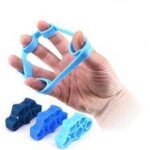
Strengthening exercises: Strengthening exercises are an important part of ulnar collateral ligament rehabilitation, as they help to restore strength and stability to the elbow joint. Exercises may include wrist curls, elbow flexion, extension, and grip strengthening exercises.
Range of motion exercises: Range of motion exercises are used to improve flexibility and mobility in the elbow joint. These may include stretching exercises or passive range of motion exercises performed with the assistance of a therapist.
Neuromuscular control exercises: These exercises are designed to improve the patient’s ability to control the movement of their arm and hand. This can help in reducing the risk of future injuries.
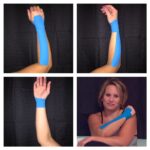
Taping or bracing: Taping or bracing may be used to provide additional support and stability to the elbow joint during rehabilitation.
Modalities: Modalities such as electrical stimulation, ultrasound, or ice may be used to help in reducing pain and inflammation in the elbow joint.
So in the end we can say that the physiotherapy treatment for ulnar collateral ligament injuries is designed to promote healing, reduce pain and inflammation, and restore strength and stability to the elbow joint. With proper treatment and rehabilitation, many patients are able to return to their previous level of activity without surgery.
Risk factors
The UCL (ulnar collateral ligament) is a band of tissue that connects the inside of the elbow to the upper arm bone. It is responsible for stabilizing the elbow joint during activities that involve throwing or repetitive overhead motions. However, certain risk factors can increase the likelihood of developing ulnar collateral ligament injuries. These include:
- Overuse: Repetitive overhead motions, such as throwing a baseball or playing tennis, can put a lot of stress on the ulnar collateral ligament and increase the risk of injury.
- Poor technique: Using improper throwing or hitting techniques can also increase the risk of ulnar collateral ligament injuries.
- Age: ulnar collateral ligament injuries are more common in adolescent and young adult athletes who are still developing and growing.
- Gender: ulnar collateral ligament injuries are more common in male athletes than female athletes.
- Previous injury: A history of ulnar collateral ligament injury or other elbow injuries can increase the risk of future ulnar collateral ligament injuries.
- Muscle imbalances: Weakness or imbalances in the muscles of the shoulder, arm, and forearm can put extra stress on the ulnar collateral ligament and increase the risk of injury.
- Joint laxity: Some individuals may have naturally loose or unstable joints, which can increase the risk of ulnar collateral ligament injuries.
- Genetics: Certain genetic factors may increase an individual’s susceptibility to ulnar collateral ligament injuries.
Understanding these risk factors can help individuals take steps to prevent ulnar collateral ligament injuries by improving technique, strengthening muscles, and avoiding overuse or repetitive motions.
How to prevent the risk of Ulnar Collateral Ligament Injury?
Preventing ulnar collateral ligament injuries can be achieved by taking the following steps:
- Proper Technique: Using proper throwing or hitting techniques can help reduce the stress on the ulnar collateral ligament. Coaches and trainers can help athletes learn proper techniques to prevent injuries.
- Strengthening Exercises: Strengthening the muscles of the shoulder, arm, and forearm can help reduce the stress on the ulnar collateral ligament. Exercises like shoulder external rotation, bicep curls, and tricep extensions can help strengthen these muscles.
- Rest and Recovery: Resting between games and practices can help reduce the risk of overuse injuries. Athletes should also take time to stretch and cool down after games and practices.
- Gradual Progression: Athletes should gradually increase the intensity and frequency of their workouts to avoid sudden increases in stress on the ulnar collateral ligament.
- Proper Equipment: Using proper equipment, such as gloves, padding, and elbow sleeves, can help reduce the stress on the ulnar collateral ligament.
- Cross-Training: Participating in other sports or activities can help reduce the risk of overuse injuries by giving the ulnar collateral ligament a break from repetitive motions.
- Consult with a Doctor: Athletes who have a history of ulnar collateral ligament injuries or other elbow injuries should consult with a doctor before returning to sports to ensure they are fully healed and ready to play.
By following these steps, athletes can reduce their risk of ulnar collateral ligament injuries and stay healthy while participating in sports and other activities.
FAQ
The ulnar collateral ligament is a ligament located on the inside of the elbow joint that helps stabilize the joint during throwing and other overhead motions.
ulnar collateral ligament injuries are often caused by repetitive overhead motions, such as throwing a baseball or softball, that put stress on the ligament. They can also be caused by sudden trauma to the elbow.
Characteristics of an ulnar collateral ligament injury can include pain on the inside of the elbow, swelling, decreased range of motion, and a feeling of instability in the joint.
ulnar collateral ligament injuries are typically diagnosed through a physical exam and imaging tests such as X-rays or MRI scans.
Treatment for ulnar collateral ligament injuries can include rest, ice, physical therapy, and in some cases, surgery.
Yes, ulnar collateral ligament injuries can be prevented by using proper technique, strengthening exercises, rest and recovery, gradual progression, proper equipment, cross-training, and consulting with a doctor.

